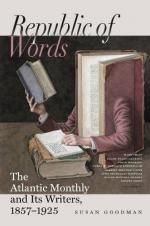But the last year of Shelley’s life had involved a very considerable progress in the formation of his intellectual character. The “Prometheus Unbound,” perhaps at once the most characteristic and the most perfect of all his works, is identical in spirit and tendency even with the earliest, “Queen Mab”; but a re-perusal of it in comparison with the other writings, even the “Revolt of Islam,” will show a more distinct presentment of the original ideas, coupled with a much more measured suggestion for acting on them, and a far less bitter allusion to the obstacles; while the charity and love are more all-embracing and apparent than ever. Imperfect as it is for dramatic representation, shortcoming even in the power to trace the working of emotions and ideas in utterly diverse characters, the “Cenci” does indicate a stronger aptitude for sympathy with other creatures on their own terms than any other of the poet’s writings. He had, therefore, sobered in judgment, without declining in his inborn genius; but, on the contrary, with a clearer sense of the limits placed upon individual action, he had gained strength; and I feel certain that a corresponding change had taken place in his perception of the true import and value of characters unlike his own. The last few months of his life at Lerici had very materially contributed to this change. Although I cannot recall any distinct statement to that effect by Mary Shelley, her conversation had left that impression on me; it is also suggested by the way in which he himself spoke of it, and is fully confirmed by the tone of the letters addressed to her from Pisa.
All who have attempted to portray Shelley, either intellectually or physically, have done so from some appreciable, almost personal point of view. When many eyes see one object, it presents itself in as many different aspects, and the description given by each bears often a slight resemblance to that of others. So it has been with Shelley. The artistic portraits of him have happened to be particularly imperfect. I remember seeing a miniature by an amateur friend which actually suggested a form broad and square. The ordinarily received miniature is like almost all of its tribe, and resembles Shelley about as much as a lady in a book of fashions resembles real women; and it constitutes evidence all the more detrimental and misleading, since it appears to give as well as to receive a color of verisimilitude from the usual written description, which represents Shelley as “feminine,” “almost girlish,” “ideal,” “angelic,” and so forth. The accounts of him by firmer hands are still cramped by the individuality of the authorship.




